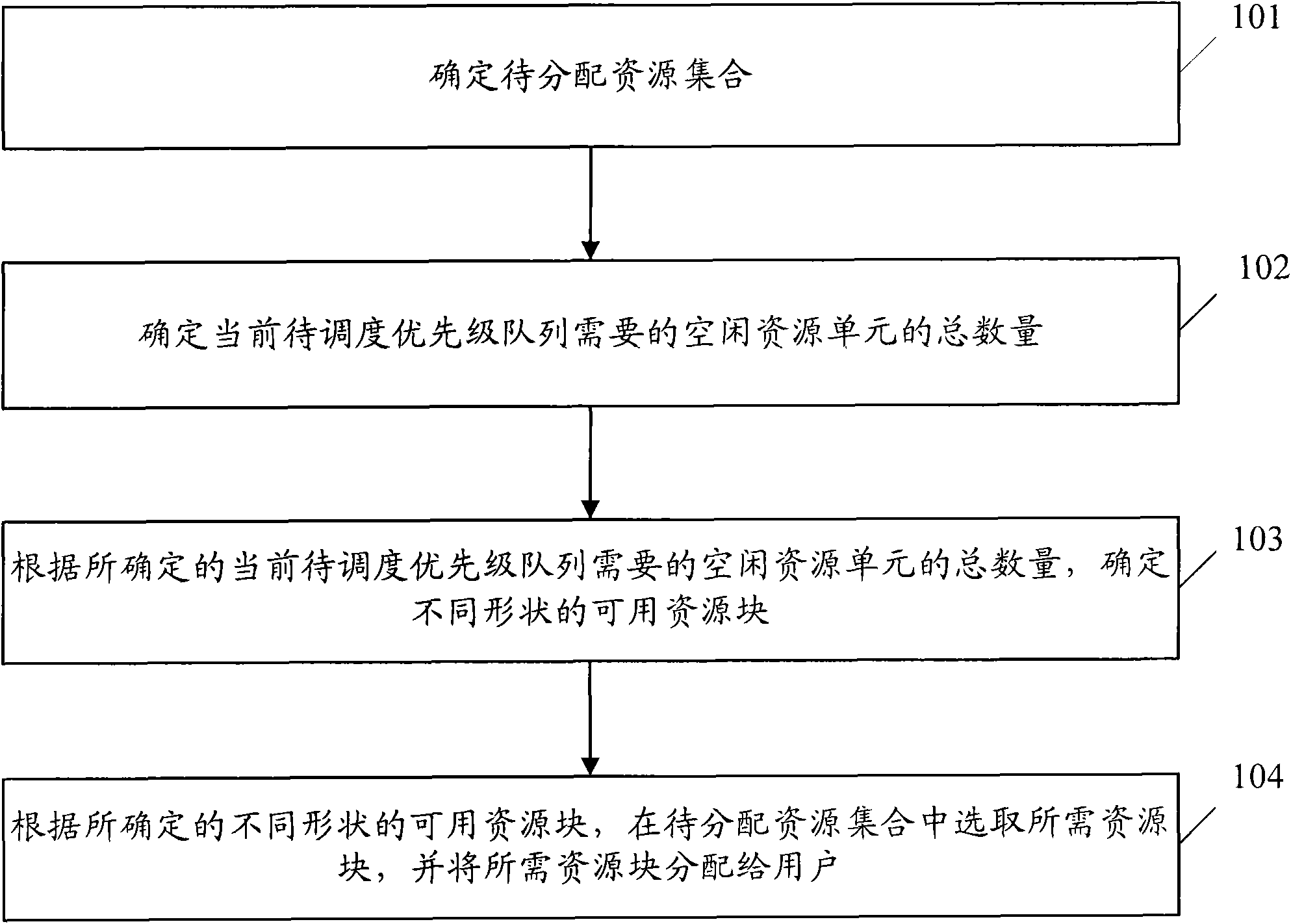TD-SCDMA (Time Division-Synchronous Code Division Multiple Access) system-based resource allocation method
A TD-SCDMA and resource allocation technology, applied in the field of resource allocation based on TD-SCDMA system, can solve the problems of resource waste, inflexible allocation method, and no resource waste solution.
- Summary
- Abstract
- Description
- Claims
- Application Information
AI Technical Summary
Problems solved by technology
Method used
Image
Examples
Embodiment Construction
[0052] In order to make the object, technical solution and advantages of the present invention clearer, the solutions of the present invention will be further described in detail below with reference to the accompanying drawings and examples.
[0053] figure 1 It is a flowchart of an embodiment of a TD-SCDMA system-based resource allocation method provided by the present invention. Such as figure 1 As shown, the method includes the following steps:
[0054] Step 101, determining a set of resources to be allocated.
[0055] Methods for determining the set of resources to be allocated include:
[0056] Step 1011, in the resource pool, search for unoccupied code channels in each time slot sequentially according to the order of time slots, and obtain all idle resource units in the resource pool, and each idle resource unit is an unoccupied one in the resource pool A pair of continuous SF=16 code channels in a time slot.
[0057] The idle resource unit is an unoccupied resourc...
PUM
 Login to View More
Login to View More Abstract
Description
Claims
Application Information
 Login to View More
Login to View More - R&D
- Intellectual Property
- Life Sciences
- Materials
- Tech Scout
- Unparalleled Data Quality
- Higher Quality Content
- 60% Fewer Hallucinations
Browse by: Latest US Patents, China's latest patents, Technical Efficacy Thesaurus, Application Domain, Technology Topic, Popular Technical Reports.
© 2025 PatSnap. All rights reserved.Legal|Privacy policy|Modern Slavery Act Transparency Statement|Sitemap|About US| Contact US: help@patsnap.com



